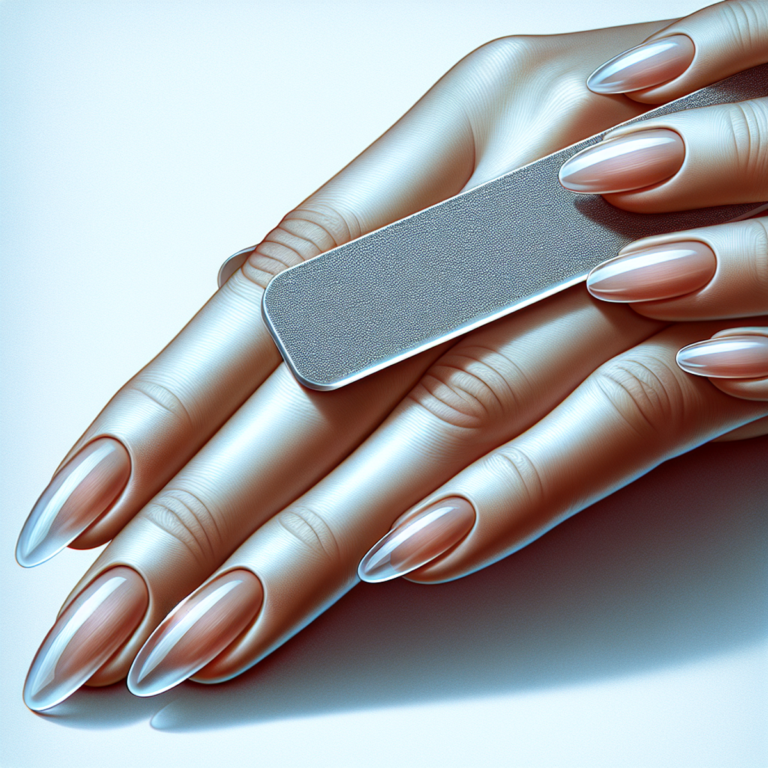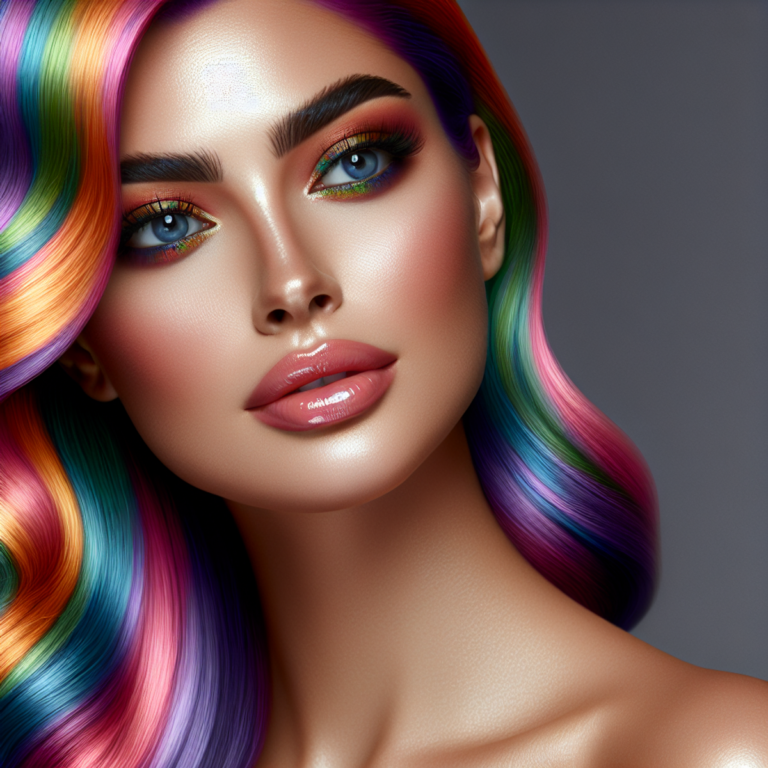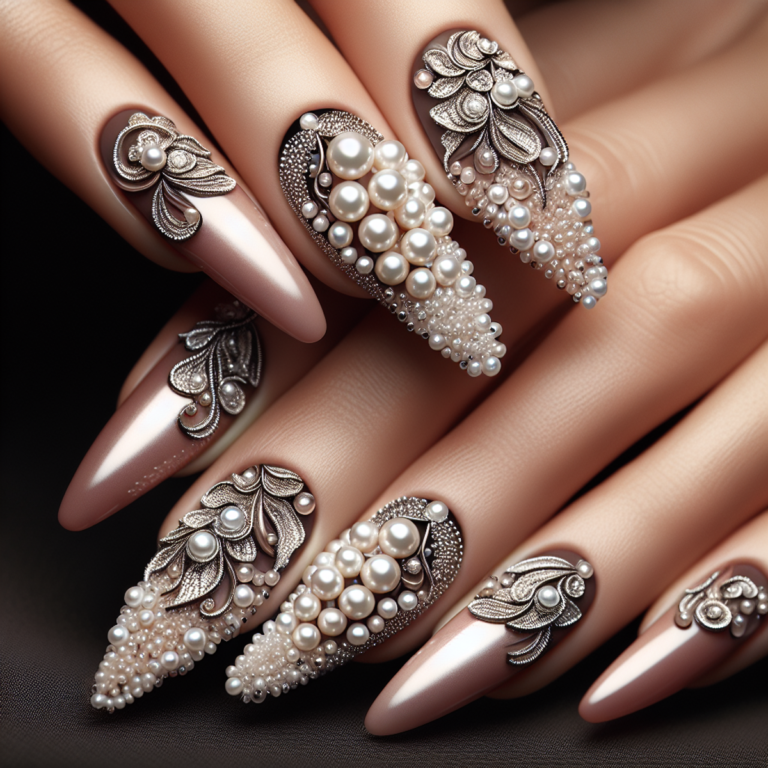If You’re Not Already Hair Cycling, It’s Time to Try the TikTok Hair-Care Trend

Introduction
The TikTok hair-care trend has taken the internet by storm, and one method that has gained immense popularity is “hair cycling.” Inspired by the creative and innovative trends on TikTok, hair cycling involves rotating hair care products based on individual hair and scalp needs. It’s a personalized approach to hair care that aims to address factors such as climate, weather, hormones, nutrient deficiencies, styling practices, and natural texture.
Hair cycling recognizes that our hair’s needs change over time and adapts to these changes through a customized routine. By regularly switching up the products we use, we can ensure that our hair receives the necessary nourishment and care it requires at any given time.
In this article, we will explore the benefits of hair cycling and guide you on how to customize a routine that works for you. Whether you have curly, straight, or wavy hair, whether you live in a humid or dry climate, hair cycling can be tailored to your unique needs. By understanding the principles behind this trend and adapting it to your lifestyle, you can achieve healthier, more vibrant hair.
Understanding Hair Cycling
Hair cycling, inspired by the TikTok hair-care trend, is a method that involves rotating hair care products based on individual hair and scalp needs. It recognizes that our hair’s requirements change over time due to various factors such as climate, hormones, nutrient deficiencies, styling practices, and natural texture. By understanding the principles of hair cycling, which involve adjusting your routine to meet the specific needs of your hair at different stages, you can create a customized regimen that addresses these changing needs.
Definition and Principles of Hair Cycling
Hair cycling is the practice of adjusting your hair care routine to meet the specific needs of your hair at different stages. Rather than using the same products consistently, you rotate them to provide targeted care and prevent product buildup. This approach acknowledges that different factors can affect the health and appearance of your hair, and by adapting your routine accordingly, you can optimize its condition.
Factors Influencing Changing Hair Needs
Several factors can impact the changing needs of our hair throughout the cycle:
- Climate and Weather: Environmental conditions like humidity levels, temperature changes, and exposure to UV rays can affect how our hair behaves. For example, in humid climates, our hair tends to be more prone to frizz, while dry climates may cause increased dryness or brittleness.
- Hormones: Hormonal fluctuations during different stages of life (such as puberty, pregnancy, and menopause) can impact our hair’s texture, thickness, and oil production. Understanding these hormonal changes can help us tailor our hair care routine accordingly (source).
- Nutrient Deficiencies: Nutrients like vitamins A, C, D, E, biotin, and iron play a vital role in maintaining healthy hair. Deficiencies in these nutrients can lead to dryness, brittleness, or even excessive shedding. Addressing nutrient deficiencies through diet or supplements can support overall hair health (source).
- Styling Practices: Frequent heat styling, chemical treatments (such as coloring or perming), tight hairstyles, and excessive manipulation can cause damage to our hair. Hair cycling allows us to adapt our routine to address and minimize the impact of these styling practices.
- Natural Texture: Each person’s hair has a unique texture—curly, straight, wavy, or coily—and requires different care approaches. Hair cycling takes into account the specific needs of your natural texture, ensuring that your routine supports its health and enhances its natural beauty.
By considering these factors and adapting our hair care routine accordingly, we can create a cycle that caters to our hair’s changing needs. This approach is particularly beneficial for individuals experiencing hair loss due to conditions such as PCOS, as it allows for targeted care during different stages of the condition (source).
Customizing Your Hair-Cycling Routine
When it comes to hair cycling, one size does not fit all. Each individual has unique hair needs and goals, which is why it’s important to tailor your hair-cycling routine to address those specific factors. By customizing your routine, you can optimize the benefits of this trend and achieve healthier, more vibrant hair.
Addressing Specific Needs and Goals
To customize your hair-cycling routine, start by identifying your specific needs and goals. Are you looking to combat dryness or frizz? Do you want to promote hair growth or reduce breakage? Understanding what you want to achieve with your hair will help you select the right products and techniques for your cycle.
Key Products in Hair Cycling
There are several key products involved in a hair-cycling routine that you should be familiar with:
- Shampoo: Choose a shampoo that suits your hair type and addresses your specific concerns. For example, if you have an oily scalp, opt for a clarifying shampoo to remove excess oil and product buildup. If you’ve been experiencing any drastic changes in your hair quality due to factors like living with hard water, consider using a shampoo designed to counteract its effects.
- Conditioner: Look for a conditioner that provides adequate hydration and nourishment for your hair type. Consider using different types of conditioners throughout your cycle, such as a deep-conditioning mask (learn how to use one effectively here) or a leave-in conditioner.
- Scalp Treatments: Incorporating scalp treatments is essential for maintaining a healthy scalp, which is the foundation of healthy hair. Scalp exfoliants can help remove dead skin cells and product residue, while serums can nourish and stimulate the scalp.
- Moisturizing Treatments: Moisture is crucial in preventing damage during the hair-cycling process. Use moisturizing treatments like masks or oils to hydrate and protect your strands.
Effective Usage of Products
To ensure the effectiveness of the products in your hair-cycling routine, follow these tips:
- Read the instructions: Always read the instructions on the product packaging to understand how to use it properly. Different products may have different usage recommendations.
- Focus on the scalp: When applying shampoo or scalp treatments, focus on massaging the product into your scalp rather than just the hair strands. This will promote a healthy scalp environment.
- Condition from mid-length to ends: Apply conditioner from mid-length to ends of your hair, as this is where it’s most needed. Avoid applying conditioner directly to your scalp, as it can weigh down the roots.
Holistic Approach to Hair Health
Hair cycling is not just about using different products; it’s also about adopting a holistic approach to hair health. In addition to the products mentioned above, consider incorporating other practices such as:
- Healthy diet: A nutritious diet rich in vitamins and minerals can contribute to healthy hair growth. Focus on consuming foods
Adapting to Seasonal Changes with Hair Cycling
Understanding the need for seasonal adaptations in your hair-cycling practice is crucial to ensure that your hair receives the care it needs throughout the year. As climate conditions and seasonal challenges vary, making changes to your routine based on these factors can significantly impact the health and appearance of your hair.
Summer Care for Your Hair
During summer, the increased exposure to heat and humidity can lead to excess moisture in the hair, potentially causing frizz and dehydration. To combat these effects, specific recommendations for summer care include:
- Incorporating clarifying products to remove buildup from sweat and sunscreen
- Focusing on hydrating treatments to maintain moisture balance
Winter Care for Your Hair
On the other hand, winter brings dry air and colder temperatures, which can strip the hair of its natural oils, leading to dryness and brittleness. Adjusting your hair-cycling routine for winter involves:
- Using hydrating products such as deep conditioning masks
- Applying moisturizing leave-in treatments to prevent damage and maintain overall hair health
By recognizing the impact of seasonal changes on your hair and adapting your cycling routine accordingly, you can effectively address the unique needs that arise throughout the year, ensuring that your hair remains healthy and vibrant regardless of external conditions.
Hair Cycling Techniques for Different Hair Types
When it comes to hair cycling, it’s important to take into account the unique characteristics of different hair types. Each hair type has its own needs and requires a tailored approach to achieve optimal results. Whether you have curly, straight, or wavy hair, here are some tips and considerations for incorporating hair cycling into your routine:
Hair Cycling for Curly Hair
Curly hair tends to be more prone to dryness and frizz. To keep your curls healthy and defined throughout the cycle, consider the following techniques:
- Hydrating Products: Use moisturizing shampoos and conditioners specifically formulated for curly hair. Look for products that contain ingredients like shea butter, coconut oil, or argan oil to nourish and hydrate your curls.
- Leave-In Treatments: Incorporate leave-in conditioners or curl creams into your routine to provide extra hydration and define your curls. Apply these products after washing your hair and leave them in for added moisture.
- Protective Styling: To minimize damage and breakage, try incorporating protective hairstyles into your routine. Styles like braids or buns can help protect your curls while you’re not actively styling them.
Hair Cycling for Straight Hair
Straight hair tends to be more prone to oiliness and can become weighed down by heavy products. Here’s how you can adapt hair cycling techniques for straight hair:
- Clarifying Shampoos: Use clarifying shampoos occasionally to remove product buildup and excess oil from your scalp. This will help keep your straight hair feeling fresh and lightweight.
- Lightweight Conditioners: Opt for lightweight conditioners that won’t weigh down your straight hair. Look for formulas that provide moisture without leaving a heavy residue behind.
- Volumizing Products: If you want to add some volume to your straight locks, incorporate volumizing mousses or sprays into your routine. Apply these products to the roots of your hair for added lift.
Hair Cycling for Wavy Hair
Wavy hair falls somewhere between curly and straight, and it often craves both hydration and definition. Here are some techniques to consider for hair cycling with wavy hair:
- Curl-Enhancing Products: Look for products specifically designed to enhance and define waves. These can include curl-enhancing creams, gels, or mousses that help bring out the natural texture of your waves.
- Co-Washing: Consider incorporating co-washing into your routine, which involves using a conditioner instead of shampoo to cleanse your hair. This can help maintain moisture while avoiding stripping natural oils from your waves.
- Lightweight Oils: Use lightweight oils, such as argan or jojoba oil, to provide extra hydration and reduce frizz. Apply a small amount to the ends of your hair after washing or as a finishing touch.
Remember, these are just general guidelines, and it’s important to experiment and find what works best for your individual hair type. Don’t be afraid to adjust your routine as needed throughout the hair cycle to address any specific concerns or challenges you may encounter.
By customizing your approach based on the characteristics of your hair type, you can ensure that hair cycling becomes a beneficial and enjoyable part of your overall hair care routine.
Incorporating Professional Advice in Your Hair-Cycling Journey
When you embark on your hair-cycling journey, seeking professional advice becomes crucial to make informed decisions and achieve optimal results. Hairstylists and trichologists possess expert knowledge that enables them to provide personalized recommendations based on your unique requirements. Here’s what you need to know about incorporating professional advice into your hair-cycling routine:
- Avoiding excessive product usage: The market is flooded with numerous hair products, making it tempting to use too many simultaneously. Seeking professional guidance can help you select the right products for your hair type and needs, preventing issues such as product buildup or damage. By comprehending the distinct characteristics of your hair, a hairstylist or trichologist can suggest the most suitable products for each phase of your cycle.
- Finding appropriate products for each phase: Hair-cycling entails adapting to changing hair needs throughout the cycle, necessitating different products. Professionals can steer you towards the right shampoos, conditioners, treatments, and styling products that address specific issues during each stage. They might also recommend specialized treatments like scalp massages or deep conditioning masks to maintain the health of your hair.
- Addressing scalp problems: If you encounter concerns like dandruff, itching, or dryness on your scalp while hair-cycling, seeking assistance from a professional becomes imperative. Trichologists specialize in diagnosing and treating scalp problems, offering tailored advice on addressing these issues. They may suggest using specific scalp treatments or modifying your routine to alleviate discomfort.
- Managing excessive hair loss: While losing some hair daily is normal, an excessive shedding during your hair-cycling routine warrants attention. Consulting a dermatologist or trichologist can help identify the underlying causes and provide suitable solutions. They might recommend supplements, topical treatments, or changes to your hair-care routine to promote healthy growth and reduce further loss.
Remember, incorporating professional advice is pivotal to the success of your hair-cycling journey. By seeking guidance from experts, you can avoid common pitfalls, customize your routine to suit your needs, and effectively address any challenges that arise. Their invaluable assistance will not only enhance the appearance of your hair but also grant you peace of mind, knowing that you’re taking excellent care of it.
Real-Life Experiences with Hair Cycling
Real-Life Experiences: Stories of Success with Hair Cycling
Hair cycling has gained popularity on TikTok, with many individuals sharing their success stories and experiences with this innovative hair care trend. Let’s take a closer look at some real-life accounts and expert testimonials highlighting the effectiveness of hair cycling:
- @HairGuruJane: Jane, a popular TikTok user known for her expertise in hair care, documented her hair cycling journey on her channel. She noticed significant improvements in her hair health, including reduced breakage and increased shine. Jane emphasizes the importance of tailoring the routine to individual needs and experimenting with different products to find what works best.
- Expert Testimony: Trichologist Dr. Sarah Andrews: Dr. Andrews, a renowned trichologist, praises hair cycling as an effective method for maintaining healthy hair. She explains that by switching up products based on the changing needs of your hair throughout the cycle, you can prevent product buildup and improve overall scalp health.
- @CurlyQueenSam: Sam, a curly hair influencer, shares her success story with hair cycling specifically tailored for curly hair types. She found that alternating between moisturizing products and protein treatments helped restore her curls’ elasticity and minimize frizz.
- Expert Testimony: Hairstylist Mark Williams: Williams, a professional hairstylist with years of experience, recommends hair cycling as a way to combat dullness and lackluster hair. He suggests incorporating a clarifying shampoo once a week to remove buildup, followed by hydrating conditioners to maintain moisture balance.
- @HealthyHairJourney: This TikTok user experienced noticeable improvements in her scalp health after implementing scalp treatments as part of her hair cycling routine. By using exfoliating formulas and massaging the scalp regularly, she was able to reduce dandruff and promote healthier hair growth.
These personal stories and expert testimonials highlight the versatility and effectiveness of hair cycling. By customizing your routine and adapting it to your specific hair needs, you can achieve remarkable results. However, it’s important to remember that everyone’s hair is unique, and what works for one person may not necessarily work for another.
Hair cycling is a journey of self-discovery and experimentation, and it may take some trial and error to find the perfect routine for you. Consulting with hairstylists and trichologists can provide invaluable guidance in developing a plan tailored to your hair type and concerns.
Keep in mind that while these success stories are inspiring, results may vary for each individual. It’s essential to manage your expectations and be patient as you embark on your own hair cycling journey.
The Results Are In: What You Can Expect from Consistent Hair Cycling
When it comes to hair care, we all want to achieve healthy, luscious locks. And that’s where hair cycling comes in. By adopting a routine that rotates hair care products based on your individual needs, you can expect some positive outcomes. Let’s take a closer look at what you can expect from consistent hair cycling:
1. Reduced shedding
One of the benefits reported by many individuals who have embraced the TikTok hair-cycling trend is a reduction in shedding. By customizing your routine and addressing the changing needs of your hair throughout its cycle, you can minimize excessive shedding and breakage.
2. Increased hair health
Consistent hair cycling can lead to improved overall hair health. By using different products tailored to specific needs during different phases of the cycle, you can nourish and strengthen your hair from root to tip. This can result in softer, shinier, and more manageable strands.
3. Enhanced moisture balance
Hair cycling allows you to address the varying moisture requirements of your hair throughout the cycle. By incorporating hydrating treatments when your hair needs an extra boost of moisture and clarifying formulas when it requires deep cleansing, you can maintain a healthy moisture balance and prevent dryness or oiliness.
4. Customized care for specific concerns
Hair cycling allows you to target specific concerns or goals that you may have for your hair. Whether it’s combating frizz or addressing scalp issues, you can tailor your routine by incorporating products that specifically address these concerns. Additionally, a healthy diet can also play a significant role in promoting hair growth and overall hair health.
It is important to note that individual results may vary when it comes to hair cycling. Factors such as hair type, texture, genetics, and overall health can influence the outcomes. It’s essential to manage expectations and understand that while some individuals may experience significant improvements in their hair health, others may see more subtle changes.
Hair cycling is a journey of self-discovery and experimentation. It may take some trial and error to find the perfect routine that works for you. Don’t be discouraged if you don’t see immediate results. Give your hair time to adjust to the new cycle, and remember that consistency is key.
Potential Drawbacks and How to Avoid Them
Addressing common concerns and risks associated with improper hair-cycling practices
When engaging in the TikTok hair-cycling trend, it’s essential to be mindful of potential drawbacks. One common concern is the risk of product overload. Overusing different products without considering your hair’s unique needs can lead to buildup, scalp irritation, or even damage. Additionally, improper cycling may disrupt the natural balance of your scalp and hair, causing unexpected reactions or undesirable outcomes.
Importance of considering your own hair’s unique needs and limitations before diving into a cycle
Before diving into a hair-cycling routine, it’s crucial to understand your hair type, texture, and specific needs. Not all products or techniques will work for everyone, so taking the time to assess your hair’s unique characteristics will help you tailor a cycling routine that truly benefits your hair health.
Final thoughts on embracing the TikTok hair-cycling trend as a form of self-care and experimentation with style
Embracing the TikTok hair-cycling trend can indeed be an exciting journey of self-discovery and care for your locks. However, it’s important to approach it with caution and mindfulness. By understanding the potential drawbacks and taking proactive steps to avoid them, you can fully enjoy the benefits of this innovative approach to hair care.










